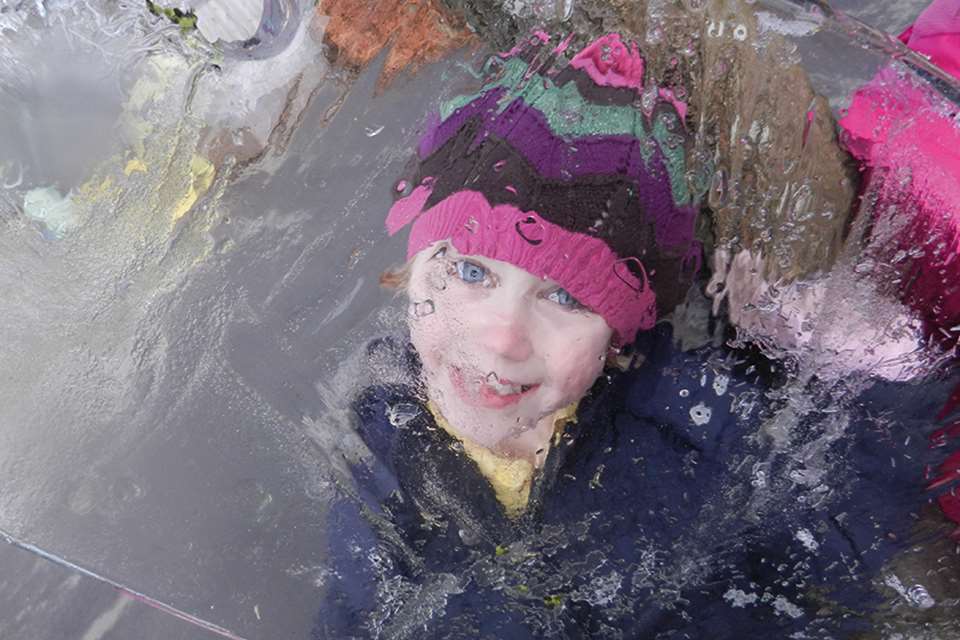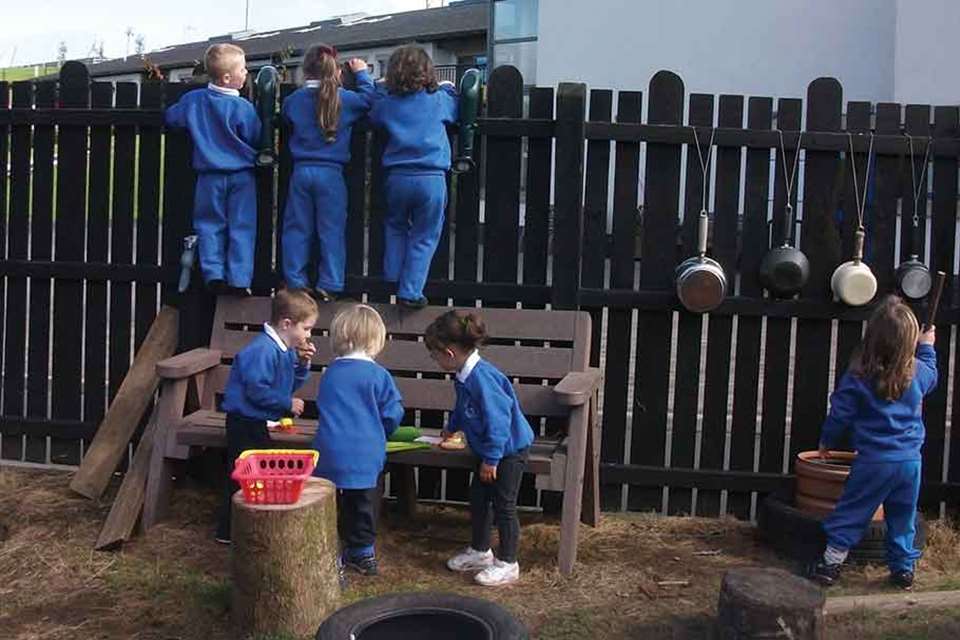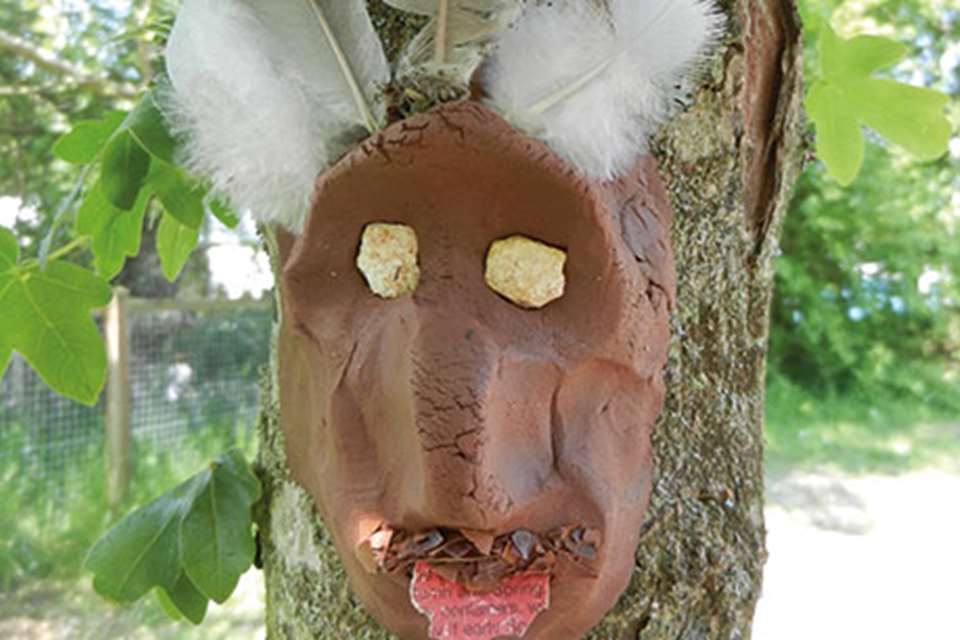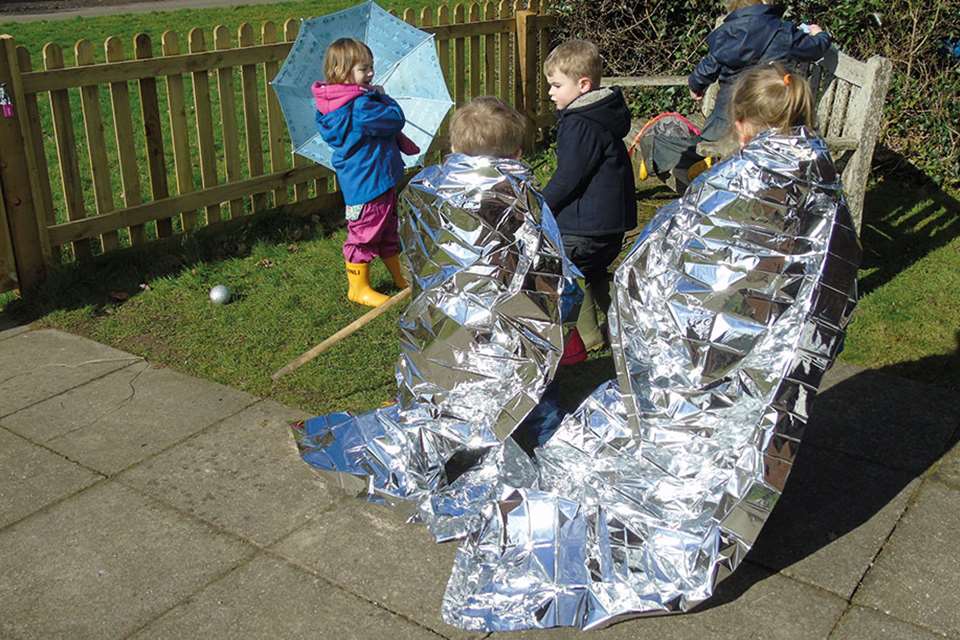EYFS Activities: Five things to do with… A tiny space
Julie Mountain
Monday, May 15, 2017
Even a small outdoor space can be turned into an enriching environment, explains Julie Mountain

With a bit of lateral thinking, it is possible to provide a full range of outdoor play experiences in a tiny space. Start by auditing exactly what you have – the size of the space, its shape, the materials it (and its boundaries) are made from, the resources and storage it contains.
1. USE THE WALLS…
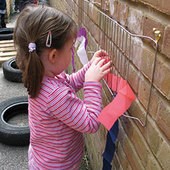 Or the fences, hedges or other boundaries. Where space is tight, children can still enjoy physically active, dextrous play: targets and hoops on or suspended between walls; weaving through fences or on frames hinged to a wall and channels; pipes and guttering for water play.
Or the fences, hedges or other boundaries. Where space is tight, children can still enjoy physically active, dextrous play: targets and hoops on or suspended between walls; weaving through fences or on frames hinged to a wall and channels; pipes and guttering for water play.
On a structurally sound wall, install climbing wall ‘holds’ along (rather than up) it. These are good value for money, come in numerous shapes, sizes and colours and provide strength, agility and resilience challenges in spaces where a fixed climbing structure isn’t feasible.
Garden mirrors in strategic locations at eye level can make a space look much bigger. Choose a variety of sizes and shapes – from small circular ‘portholes’ through to funfair-style distorting mirrors, but remember to place them away from direct sunlight. Mirrors behind planting beds can be particularly effective at enlarging a petite space.
2. STORAGE SOLUTIONS
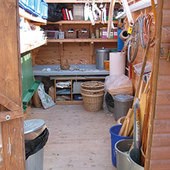 Be strict about storage:
Be strict about storage:
Get rid of resources that are broken, age-inappropriate or past their sell-by date.
- Swap space-hogging sheds for tall, narrow storage units; hanging rails or hooks on walls; containers on castors that double up as portable seating; tidy boxes that can be brought indoors at the end of the day.
- Use a playhouse as overnight storage – but only store items that are used every day so that it’s always empty at the start of a session and doesn’t become a dumping ground for bulky items.
- Keep continuous provision resources in marked baskets or tidy boxes, on lower shelves so that children take responsibility for collecting and replacing them.
- Make a large shed do ‘double duty’ – when its contents are out and being used, with the doors open, could it become an artist’s studio? A playhouse? A workshop?
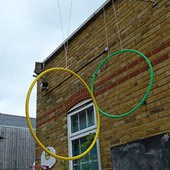 3. LOOK UPWARDS
3. LOOK UPWARDS
Make the most of what is above eye level: create a network of washing lines at high level to suspend items from – hula hoops, pots and pans, blankets for shade.
Create level changes with portable decking squares or crates; lay out blankets for cloud spotting; provide clear umbrellas for rainy days; install bird or bat boxes; curate a basket of binoculars, telescopes and wildlife ID sheets.
4. GO GREEN
Plants contribute to well-being in even the tiniest spaces. Introduce greenery that children can interact with and might attract wildlife (in other words, not fake grass!):
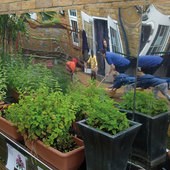 Plant ‘ballerina’ blossom trees, as these grow upright and occupy minimal root and branch space.
Plant ‘ballerina’ blossom trees, as these grow upright and occupy minimal root and branch space.
Place mirrors behind planted areas, or paint plants on a wall behind real plants.
Grow a green wall with a fast-growing climber such as clematis, honeysuckle or false Virginia creeper – or grow up a pergola or archway.
Wheeled planters help divide up spaces in different ways throughout the day.
Install hanging baskets – vary the contents throughout the year, with colourful annuals over winter and trailing strawberries or tomatoes during spring and summer.
If grass is proving impossible to maintain, consider growing some in a raised bed, just so that children can experience lying in it… and cut it with scissors!
5. GO OUT AND ABOUT
Make frequent forays into your neighbourhood. Expeditions don’t have to take hours, and they don’t need to have a predetermined destination, although regular trips to an open space where children can run freely are important when outdoor space is at a premium.
Pottering around the streets, talking to local residents and shopkeepers, spotting interesting buildings, trees or dogs are all great ways to build confidence in children and provide sustained physical exercise.
BENEFIT-RISK ASSESSMENT
Implement a free-flow system so that children come and go as they please, rather than an ‘all in, all out’ system which clogs the space and makes sharing more difficult for children.
Always ensure there is a clear route between the building and anyawkward or obscured areas.
Teach children not to eat ‘non-food’ plants. Examine the fruits and leaves of food plants often to familiarise children with their shape, colour and smell. Grow food and ‘non-food’ plants in separate beds or tubs to avoid confusion.


